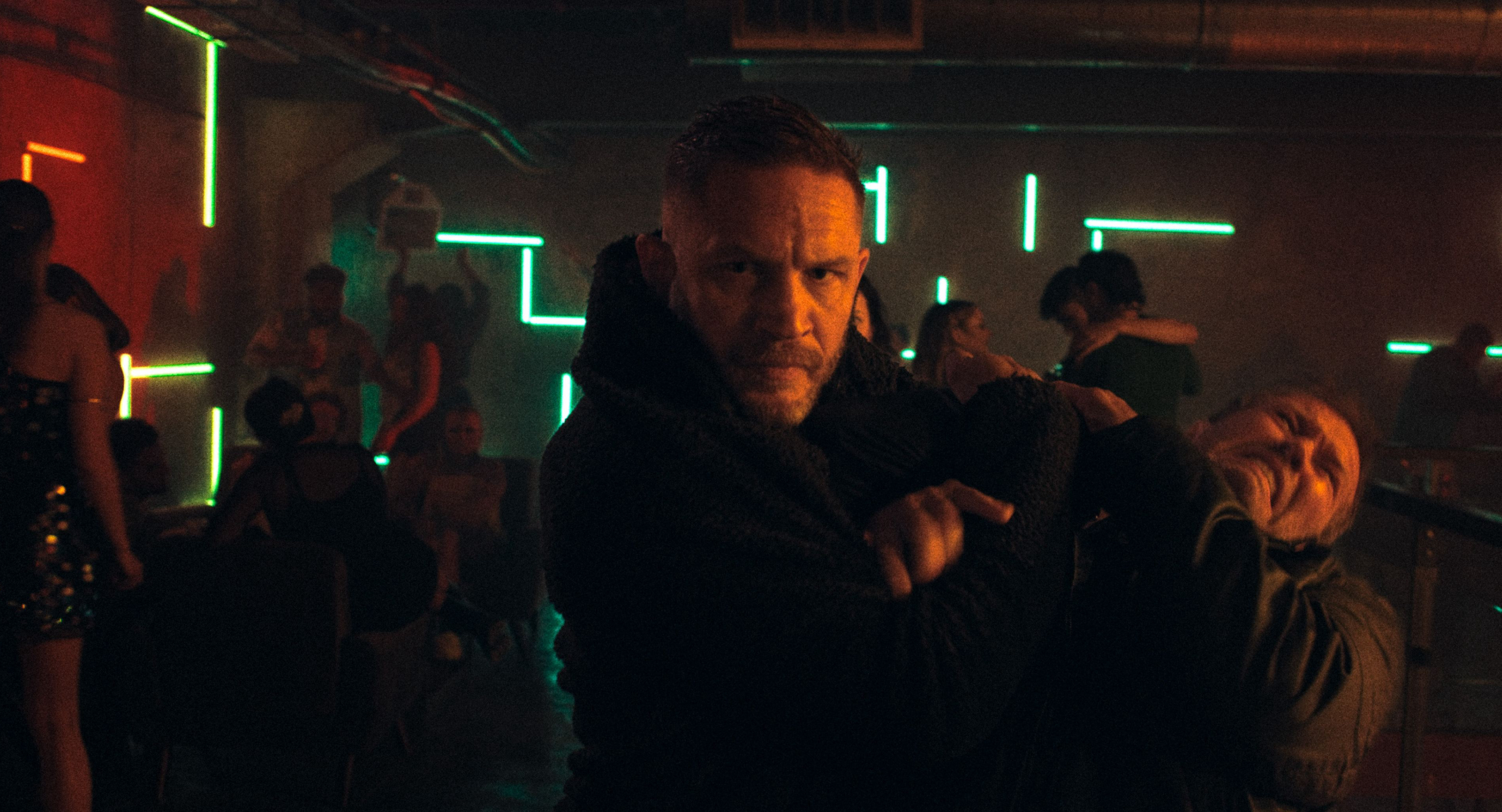Havoc – Film Review
Published April 25, 2025

Gareth Evans, best known for his bone-crunching martial arts showcases in The Raid series, returns with Havoc, a brooding neo-noir action thriller that leans heavily into the grit and grime of urban decay. Anchored by a bruised and brooding performance from Tom Hardy, the film is a visceral dive into the underworld of a corrupt city, echoing the stylized despair of classic noir while propelling forward with unrelenting, boots-on-the-ground intensity.
Set in an unnamed, rain-slicked metropolis teetering on the edge of collapse, Havoc unfolds after a drug deal goes violently south. Enter Hardy’s Detective Walker, a lone wolf with fists of steel and a haunted past. When a politician’s estranged son disappears amidst the chaos, Walker is dragged into a labyrinthine descent through the city’s criminal underbelly. Each alleyway, basement, and penthouse he navigates peels back another layer of rot festering beneath the city’s surface.
Evans’ fingerprints are all over the choreography—each fight feels like a feral, gasping battle for survival. Gone are the balletic flourishes of The Raid; Havoc embraces a more grounded brutality. Hardy embodies this aesthetic perfectly. His Walker is not a superhero, nor even a particularly noble man. He’s a survivor, dragged down by the weight of his own compromises, smashing his way forward with a desperate sense of purpose.
From the moment the first punch is thrown, Evans sets a tone of relentless propulsion. Walker’s quest takes him through crack dens, nightclubs, and opulent homes, each encounter escalating the tension. The camera lingers on bruises, broken limbs, and bloody corridors—not for spectacle, but to emphasize the physical and emotional toll of the journey. In this, Havoc is brutally effective. There’s a rhythm to the violence, not unlike jazz: chaotic, improvisational, and deeply expressive.
Hardy is the engine of this chaos, giving a performance that’s largely physical, yet emotive in its silence. He communicates grief, exhaustion, and an ever-present simmering rage with a clenched jaw and weathered eyes. It’s not a stretch—this is familiar Hardy territory—but he fits the material like a glove. There’s a quiet tragedy in Walker, a sense that he’s not just solving a case, but atoning for past sins.
As Ellie, Jessie Mei Li is compelling but underused. She brings emotional nuance to what could have been a functional role, injecting vulnerability and fire when given the chance. Her scenes with Hardy hint at a deeper emotional core the film doesn’t fully explore.
Timothy Olyphant adds a dash of snake-oil charm as Vincent, who is one of the film’s most promising characters. He walks the line between menace and charisma deftly, but his role suffers from the same issue plaguing the film’s middle act: a lack of clarity. The web of conspiracy is dense—almost too dense for its own good. Plot twists come fast and murky, and while the atmosphere stays rich and oppressive, the narrative coherence takes a hit.
Forest Whitaker in the role of Lawrence is solid, adding a moral backbone and wearied gravitas to the film. His scenes are brief but impactful, serving as emotional bookends that remind us Havoc is not just about fists and bullets—it’s also about the cost of justice in a world where everyone seems compromised.
When it comes to the visual style and language, Havoc is a noir lover’s dream. Cinematographer Matt Flannery drenches the frame in shadows, neon hues, and dim halogen lighting. The city becomes a character itself: all crumbling tenements, chain-link fences, and cracked asphalt. This is not a world that welcomes heroes—it chews them up and spits them out.
Yet despite all this tonal mastery and kinetic energy, Havoc falters when it tries to deepen its themes. The conspiratorial plot, which ties city hall to drug cartels and human trafficking rings, never quite achieves the emotional payoff it aims for. There are hints at grand commentary about institutional corruption and cycles of violence, but they remain just that—hints. The emotional arcs, particularly for Ellie and even Walker himself, feel truncated, as if character development was sidelined to make room for another fight sequence.
That’s not to say Havoc lacks ambition. It’s clear Evans wanted to make something more substantial than a shoot-’em-up action flick. And in many respects, he succeeds. The brutality serves a narrative purpose. The corruption feels lived-in. But the connective tissue between character, theme, and spectacle isn’t always strong enough to hold up under scrutiny.
Still, for those who yearn for grounded, gritty action that doesn’t insult the viewer’s intelligence, Havoc offers a potent mix. It’s a bruiser of a film—bloodied, battered, and proud of it. There’s enough here in terms of atmosphere, performance, and sheer visceral thrill to recommend, even if it doesn’t quite stick the landing.
Evans continues to be a singular voice in action cinema, unafraid to push physical storytelling to its limits. Havoc is more mature than The Raid, if not quite as electrifying. It aims for noir-inflected depth and lands somewhere between Serpico and John Wick, though less polished than either.
Havoc is a satisfyingly grimy descent into hell with a battered guide we can’t help but follow. Hardy’s Walker may not solve all the city’s ills, but he drags us through every blood-soaked hallway and rain-drenched streetlight with an intensity that’s hard to shake.
Havoc doesn’t reinvent the genre, but it executes its mission with gritty determination and atmospheric flair. Gareth Evans and Tom Hardy prove a formidable pairing, even if the film’s plot machinations don’t fully rise to meet the visceral power of its set pieces.
